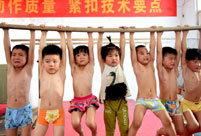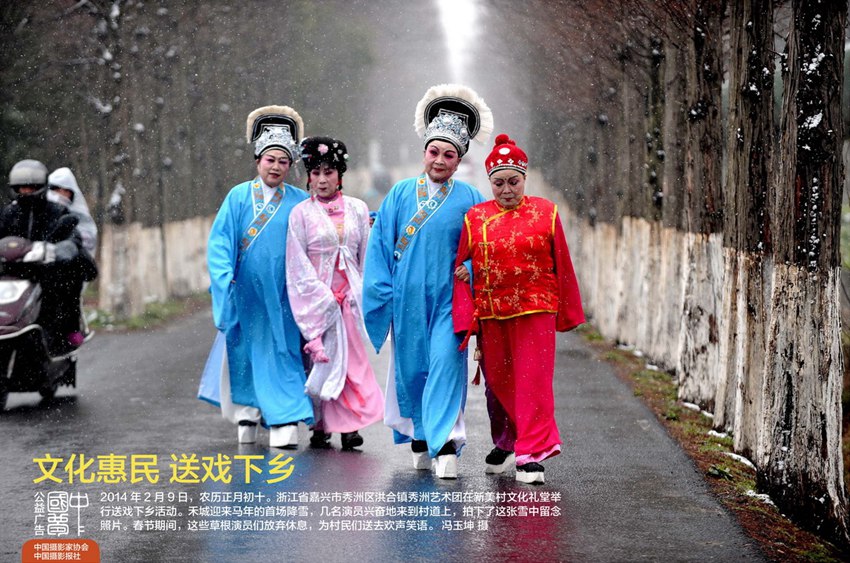 Ceremony volunteers for Youth Olympics make public appearance
Ceremony volunteers for Youth Olympics make public appearance
 A glimpse of female crew of Liaoning aircraft carrier
A glimpse of female crew of Liaoning aircraft carrier
 Stills from "Dad, where are we going?"
Stills from "Dad, where are we going?"
 Legless man's happy life
Legless man's happy life
 Top ten most beautiful islands in China
Top ten most beautiful islands in China
 Aerial view of Hong Kong
Aerial view of Hong Kong
 Happy life in Xinjiang
Happy life in Xinjiang
 2014 China Hainan Int'l Automotive Exhibition kicks off
2014 China Hainan Int'l Automotive Exhibition kicks off
 Collection of 'China Dream' public-spirited ads
Collection of 'China Dream' public-spirited ads
 The silent holy stones
The silent holy stones
BEIJING, July 22 -- China's air quality improved slightly in the first half of 2014 compared with the same period in 2013, but aggravated ozone pollution became a prominent problem across the country, according to Environmental Protection Ministry figures released on Monday.
In 74 major cities, air quality was good 60.3 percent of the time from January to June. The figure was 58.7 percent during that period in 2013. In addition, the frequency, duration and pollution concentration of severely polluted days all decreased this year.
A ministry official who wished to remain anonymous said the improvement came from tougher policies adopted after the Airborne Pollution Prevention and Control Action Plan was issued in September 2013, and more favorable weather conditions.
But the rising ozone level marred the overall improvement. Ozone concentration increased by 6.8 percent nationwide - it was as high as 12.8 percent in the Yangtze River Delta region.
Although ozone is beneficial in the stratosphere, blocking ultraviolet rays from reaching Earth, high ozone levels at low altitudes can irritate the eyes and irreversibly damage the lungs and central nervous system. Adding to the danger, ozone pollution is easily shrugged off by the public because it does not affect visibility, said Chai Fahe, vice-president of the Chinese Research Academy of Environmental Sciences.
Chai said ozone levels can be raised by natural conditions such as stronger sunshine and higher temperatures, and by manmade factors such as growing concentrations of nitrogen oxide and volatile organic compounds.
"The total of nitrogen oxide emissions has just reached the peak, but VOCs are still increasing because they are just beginning to be controlled," he said.
The higher average temperature in the first half of 2014, compared with last year, is also likely a factor, he said.
Regionally, air quality improved in the Beijing-Tianjin-Hebei cluster, by 3.2 percent, in 2014. But it decreased by 0.5 percent in the Yangtze River Delta region, and by 0.8 percent in the Pearl River Delta.
"The results reflected the level of efforts made by the government bodies of the three regions," said Chai. "Policies being adopted in the Beijing-Tianjin-Hebei cluster are unparalleled in the nation."
But despite these efforts, eight of the 10 cities with the worst air quality in the first half of 2014 are in that region. The 10 cities were Xingtai, Shijiazhuang, Baoding, Tangshan, Handan, Hengshui and Langfang, all in Hebei province; Jinan in Shandong province; Xi'an in Shaanxi province and Tianjin.
 Zhujiang ambassadors attend lotus lanterns activity
Zhujiang ambassadors attend lotus lanterns activity
 From girly girl to tough special police officer
From girly girl to tough special police officer
 Children attend gymnastics training in summer
Children attend gymnastics training in summer
 Beautiful sceneries along the special travel route in Xinjiang
Beautiful sceneries along the special travel route in Xinjiang
 Focus on 1st female patrol team in Turpan
Focus on 1st female patrol team in Turpan
 Collection of 'China Dream' public-spirited ads
Collection of 'China Dream' public-spirited ads  National fitness team members integrate traditional and modern beauty
National fitness team members integrate traditional and modern beauty Moms on their kid’s coming out
Moms on their kid’s coming out Chinese fighters through lens
Chinese fighters through lens
 Top 10 most beautiful islands in China
Top 10 most beautiful islands in China
 Zhou Xun announces engagement to Archie Gao
Zhou Xun announces engagement to Archie Gao
 Photos of the Week
(July 6 - July 12)
Photos of the Week
(July 6 - July 12)
 'Super moon' seen in Beijing
'Super moon' seen in Beijing
 One-legged women with high heel goes viral on Internet
One-legged women with high heel goes viral on Internet China's largest 3D printer builds 2-meter-long boat
China's largest 3D printer builds 2-meter-long boat
Day|Week|Month